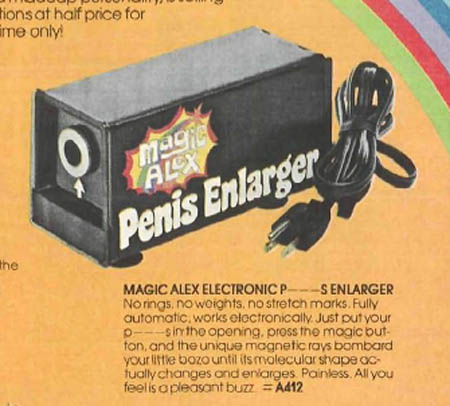|
Listen, Do You Want To Know A Secret? A.K.A. “Magic Alex” continued…
The saga of the Apple Years has over time proved to be an irresistible magnet for those interested in Beatles History. The Let It Be movie showed them not creating an album as they had hoped, but the gradual disintegration of the band. Countless bootlegs have surfaced over the years from the original “Kum Back” to “Winter Of Discontent” and the listening marathon that is Purple Chicks “A/B Road” series. One of the more humorous facts about Apple in its death throes concerns John’s relationship with Yanni Alex Mardas, better known to Beatles fans as "Magic Alex." Although he was basically nothing more than a television repairman, he was also a smooth talker who intrigued John with his "Nothing Box," a box of blinking lights that would mesmerize Lennon during acid trips. Mardas subsequently claimed that he could make paint that would make things invisible or change the color of cars; construct force fields that would surround Ringo's drums so that their sound would not be picked up by other studio microphones; make a force field that would block the sound of screaming fans during concerts; and make many other outlandish devices, including a flying saucer using the engines from Lennon's Rolls and Harrison's Ferrari. Perhaps Mardas’ biggest failure was his attempt to build a 72-track recording studio at Saville Row, headquarters of Apple. When the filming of Let It Be at Twickenham Studio went sour, the Beatles moved to the new recording studio at Saville Row, only to find that what Mardas had built was totally useless. As George Harrison put it, "Nothing worked." The group was forced to bring in their portable recording equipment used at Twickenham to finish the Let It Be sessions. However some 40 years on, a re-examination of some of his, what appeared at the time, more outlandish theories may well have a practical scientific basis. Alex was convinced that materials could absorb sound which was dismissed as nonsense at the time... In 2010 Wikipedia has this to say… "Absorption refers to the absorption of sound waves by a material. The absorption is the ‘missing piece’, when comparing the total reflected and transmitted energy with the incident energy. It is the property of a material that changes acoustic energy into usually heat energy. A material or surface that absorbs sound waves does not reflect them. Absorption of a given material is frequency-dependent and is affected by the size, shape, location, and mounting method used. A good sound absorber is normally a porous material. Mineral wool, glass wool, and micro perforated plates work as sound absorbers. "..and there is now available on the internet a Co - efficient Chart detailing how such materials absorb sound waves and at what rate: What has now excited the attention of Prof. Aliol of Managra University is Alex' second theory about the recovery of such sounds! One of the machines which Alex left plans for looked something like the Relativity Cadenza equipment from “Help!”, but the Professor has discounted this as being totally impractical. One of the other diagrams has proved to be more viable and equipment has now been put together in the lab which on test has recovered parts of a short musical piece from a Fibre Board partition. The problem seems to be the middle range which is proving more difficult to extract. Whilst a fully functioning model is still several years away, the Professor is convinced that he will be able to recover absorbed sound from a variety of materials. So, you might ask, why should this be of any interest to Beatles Fans? The Beatles actually played at a limited number of venues in the UK when they toured from 1963 to 1965 - if the original seating, for example, or even the curtains could be recovered from such venues, then we could have a whole host of new Beatle material including the legendary Christmas Concerts at the Finsbury Park Astoria! There is still a long way to go, as the Professor quite rightly points out as many, many artists appeared on these stages as well…the Astoria eventually became the Rainbow. He is now working with a young French lady, Avril Poisson who is attempting to write a computer program which will not only separate the different artists from each other, but perhaps the different instruments and vocals because of their absorption co-efficient rate. I am closely in touch with developments and will keep you updated on a regular basis.
Walrus Gumboot
 |
